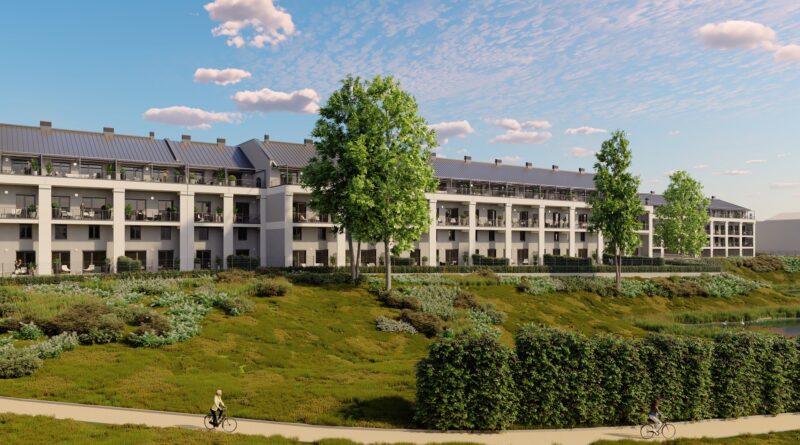Industrial real estate market: Continued stabilization, moderate increase
Today Colliers International Hungary has published its latest market report about the Hungarian industrial real estate market. The report states, that after a year of records in 2008 and the year of adaptation in 2009, 2010 was the year of stabilization on the Budapest industrial real estate market. The market moved towards a state of balance during the year, in terms of supply and demand, as well as rents.
“Market developments were largely in line with Colliers International’s expectations voiced at the beginning of last year, when we noted that speculative developments would decrease sharply, demand would be similar to 2009 and the role of pre-lease agreements would increase significantly. We missed the mark, however, with regard to completed new developments, which underperformed our earlier expectations.” – said Tamás Beck, director of Industrial Ageny at Colliers International Hungary.
Due to the report, developer activity in 2010 was weak, with a total of 63,000 sqm of space delivered to the market, only half of what Colliers originally expected for the year. The cause of this was that fewer projects were launched, as developers took the position that they would not launch new projects until there is a significant fall in vacant space on the market. The majority of the new supply was delivered in the first half of the year, comprising four speculative projects of a total 46,000 sqm area, while the second half saw the delivery of only a single built-to-suit (BTS) project, with 17,000 sqm of space. As a result, the overall stock of industrial space built for lease in Budapest and its vicinity rose to 1.622 million sqm.
Take-up during the year was mostly in line with the expectations of Colliers International, coming in at 122,000 sqm. The figure includes 33,600 sqm of expansions, or 27.5% of the total, which is in line with the traditional 15–40% range. Of the newly leased space, 71% was in “big box” buildings, 20% in “small units” and around 9% in city logistics spaces. Small units performed especially well. A notable trend was that large-scale transactions were missing from the market, with the average size of leased space falling to around 1,300–2,000 sqm, with no deals for space of more than 5,000, or especially 10,000 sqm.
Logistics firms, which earlier accounted for around half of take-up, were also missing, closing just one or two deals. At the same time, manufacturing firms have started to appear on the market, both in Budapest and elsewhere, seeking to lease space. Similar to 2009, there were also many renegotiations and extended leases in 2010. However, in many cases, these are negotiated directly between the tenant and owner, and are therefore not so transparent, providing insufficient data to be representative for the market. “Colliers is aware of at least 60,000–70,000 sqm that was renegotiated, but we would not be surprised if the actual figure was double or even many times this. Overall, we can say that interest and activity on the lease market is very high, with many firms looking for adequate space, but remaining cautious for the time being and often deciding to wait to see how the market develops”. – said Tamás Beck.
As there was also a certain amount of industrial space going vacant in the period, the take-up of the past year was enough to bring net absorption to around 25,600 sqm in terms of speculative buildings, which compares to the 50,000 sqm figure for 2009 overall. This figure can be considered a positive sign, as it indicates that stabilization has taken place and that the market is in a state of balance. As a result of the positive net absorption, the vacancy rate decreased slightly in 2010, to around 20.7%, compared to 21.2% at the end of the previous year. There was 336,000 sqm of vacant space at the end of 2010.
Within this, vacancy at speculative buildings moved up slightly from 23% to 24%, while the figure dropped from 17% to 13% for BTS investments, compared to the end of 2009. The amount of empty space available is still fragmented in Budapest and its vicinity. While it is relatively easy to find 1,000–4,000 sqm of leasable space, there are only eight locations where more than 10,000 sqm of continuous space is available and only four where more than 20,000 sqm can be leased at this moment.
Rental levels stabilized during the past year, as headline rents for big box buildings remaining in the €3.2–3.8/sqm/pcm range, while the rate at city logistics buildings is around €5/sqm/pcm. Owners are mostly managing their vacant space, trying to offer them at favorable prices, in which case however they prefer not to sign agreements for the long term. While the market of industrial property and land sales transactions was entirely dead in 2009, last year saw some movement in this field, with some interest toward smaller buildings and plots, mostly from small businesses. However, although demand picked up, there were few actual transactions. At the same time, interest for larger projects and plots remains limited.
Colliers International expects that 2011 will be a year of continued stabilization on the industrial market, with moderate growth possible in the near future. Project deliveries will be well below even last year’s low figure, with only two speculative projects known of at the current time comprising a total of 10,500 sqm. Additional BTS or pre-lease projects could be developed, however, as some companies continue to consolidate their operations. The real estate consultant company does not expect significant additional space to become vacant in 2011. “As a result of the large amount of tenant interest currently seen on the market, we expect take-up to be similar to last year, resulting in higher net absorption and thus also a visible decline in the vacancy rate. Rents are also expected to remain stable or, as a result of the above, perhaps rise slightly. The transaction market is expected to show moderate activity, but interest toward larger buildings and plots is expected to remain weak.” – summarized Tamás Beck.
































